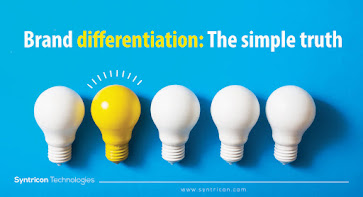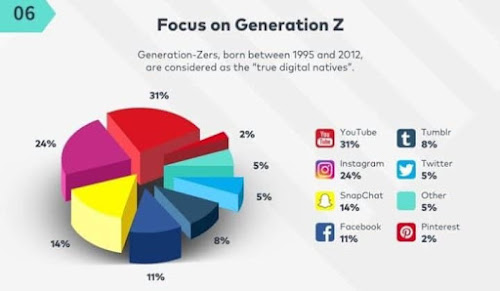Brand Differentiation Statistic
Statistics can be used for making sales predictions, fiscal analysis of capital expenditure projects, constructing profit plans for a new product, setting up production quantities, and making a sampling analysis to determine the quality of a product. Statistical improvements mean the use of statistical methods for the quality improvement of products and services. A great amount of data is collected and then processed under different statistical methods and as a result, a more reliable and better product or service is formed. These statistical methods include different mathematical formulas, models, and techniques. Mostly two main methods that can be used these are:
1. Descriptive statistics (the use of
mean, median, standards, deviation, etc.)
Descriptive statistics are
very important in business because
if you simply present your raw data it would be hard to visualize what the data
was showing, especially if there was a lot of it. Therefore it
enables you to present the data in a more significant way, which allows simpler
clarification of the data.
2. Inferential statistics (concluding
random variations)
Inferential
statistics help to advise details for a situation or phenomenon. It allows you
to draw inferences based on
extrapolations.
The
basic difference between
descriptive and inferential statistics is that descriptive statistics measure
for decisive measurement while inferential
statistics note the edge of error of investigation performed.
Now, whether the results are helpful or not?
This depends a lot on the confidentiality of the data which is provided. It is
the responsibility of the statistical agencies that the data they provide to
their subjects should be
kept confidential.
HERE
ARE GIVEN SOME STATISTICAL IMPROVEMENTS FOR COMPANIES:
1) Targeting deficiencies:
This means the areas which should be
focused on data collection
should be the ones where policy research relevance is high but policies and
research are weakest.
Regardless of how big or small your business may be, there is likely an apartment
for improvement. For many companies, employees holding the key to growing
business successfully. When you have high employee turnover, it makes it
exciting to focus on growth and expansion. Take a look at these company
improvement proposals with a major impact on keeping employees satisfied and
happy in the workplace. You should be given the priority to
encouraging communication, engagement, and participation for all of the
participants affected by the QI process. Absorb what is most
important to the people who make up the microsystem and look for ways to help
them hold the changes and begin to take possession of them. Then Start to apply your strategies of
improvements with small-scale demonstrations, which are
easier to manage than large-scale changes. Small-scale demonstrations also
allow you to improve the new processes, prove their impact on practices and
outcomes, and build increased provision by participants. Keep in mind and remind others that QI is a very important process.
With the help of it, you will be making frequent improvements
along the way as you learn from experience with each step and classify other
actions to add to your strategy.
2) COST ACCOUNTING SYSTEM:
A cost accounting system (also
called product costing system or
costing system) is an outline
used by firms to approximate the cost of
their products for profitability analysis, inventory assessment, and cost control. It is applicable
for firms that are engaged in the production of unique products and special
orders. Cost
accounting is used by
a company's central
management team to identify all adjustable and fixed costs related to the production
process.
The application of a cost accounting
system is an important step for increasing small business. Implementation
begins with documentation of the correct costing system for the business, moves
on to placement of the system and textures with post-deployment support to
train employees on how to use the system effectively. Best practices in
cost-system implementation emphasis on all three parts of the execution
process.
3)
Correct Complexity:
There
are cost accounting systems
designed for the smallest only proprietorship on up to the largest global
corporation. It is important to remember that bigger is not essentially better.
Small-business owners should look to device a cost accounting system that is
corresponding to the difficulty of their business. Less complex - companies may
be best using a standard software system or a system that is combined into
their current bookkeeping software. However, companies that have many products
or complex business processes may wish to seek a more modified solution.
4) Scalability:
Cost accounting system implementation is much
easier when you only have to implement the system once a time. Managers should
be alert to choose a cost accounting system that is accessible to the company.
For example, even if you only manufacture a handful of products currently, you
may wish to implement a cost accounting system that can switch more products as
your contributions grow.
5) Member
Involvement:
As your company appliance a cost
accounting system, it is important that involve employees in the process. Teams
who are involved in the process of implementing the system are more likely to
have accepted into the transition. This helps employees understand the system
more quickly, but also helps these employees can serve as representatives to
other employees who weren't involved in implementation. Often, you can see that
the employees who were involved in implementation are more successful in accumulative
trust of the new system than management.
So, a cost accounting system must be developed which tells us the exact
cost required to deliver a service or product. The company should know whether
the product is costing more or is it generating more.
6) Client
/customer survey:
A client/customer survey is very important. Surveys are
one of the major means of conveyance for collecting the
information businesses need. Done right, surveys can reduce
new product and another risk; generate visions about employees, customers, and
markets; and support PR, advertising, and other communications programs with objective
constituencies. Companies should distribute questionnaires among their clients
every year asking them about the features of their products which they liked
and disliked. Now the company will produce the products according to their
customers as much as they can and this will help the company to keep long-term
clients rather than continuously finding new clients.


Comments
Post a Comment